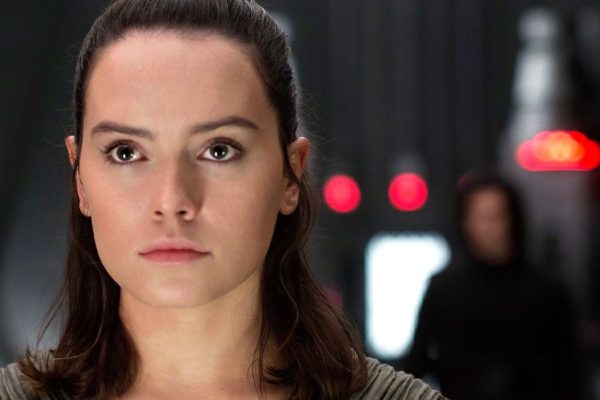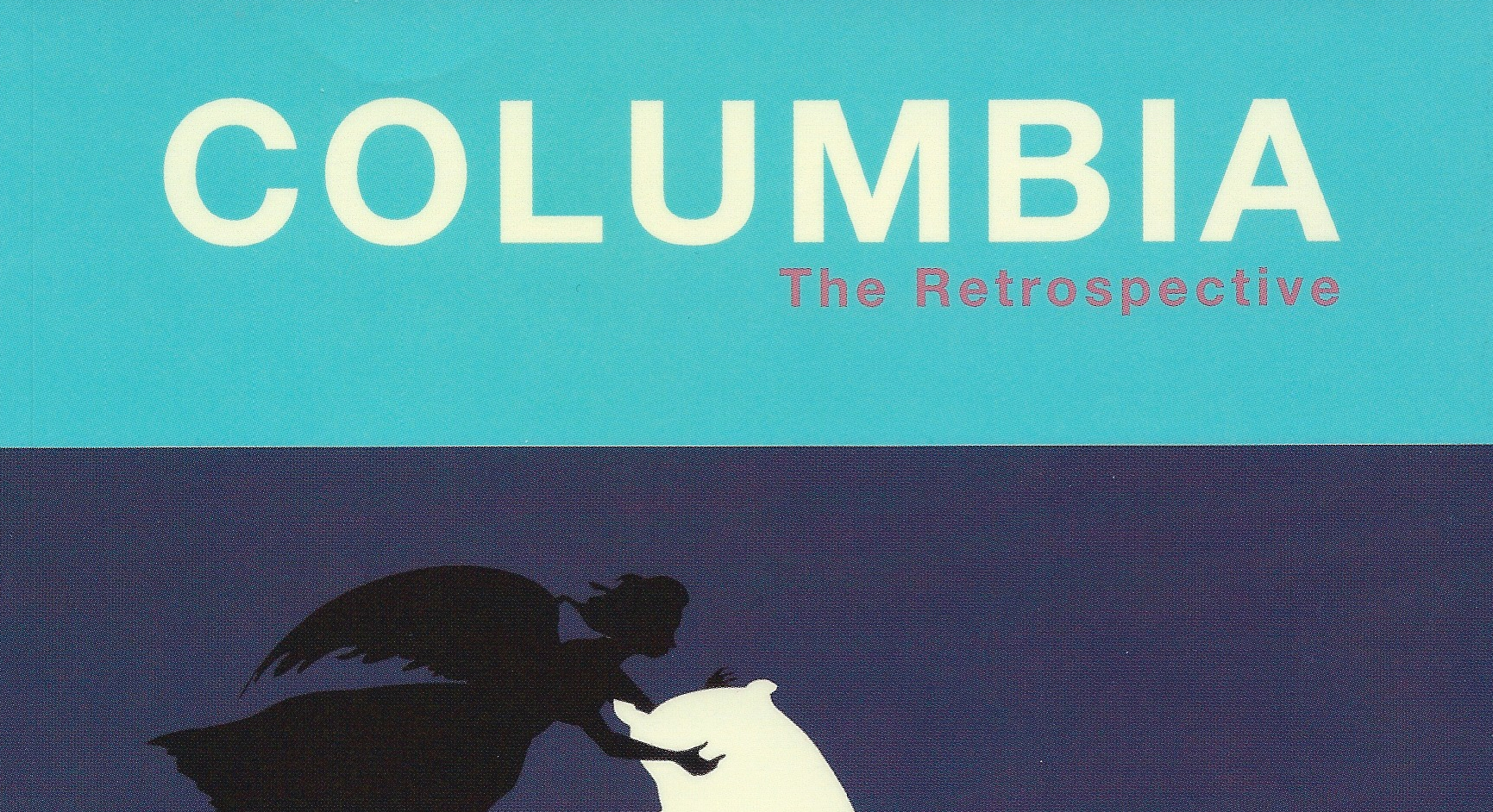If you’ve seen The Last Jedi you’ll know what scene caught my eye—you know, the one in the mirror. Yeah, that one. Holy shit that is a good sequence. May I tell you why I think so?
Fantastic.
If you haven’t seen The Last Jedi…spoilers…kind of.
In the midst of Rey’s Jedi training, Luke asks her to reach out and feel everything, and in so doing she feels the intense balance of life and death, tragedy and joy, peace and chaos, light and dark. We see touching scenes of Porgs and other island life: eggs smashed and babies born and fish swimming, illustrating all of the tensions the Force holds together; but when we get to the Dark side, we are shown a hole in the ground, like an Avernus opening into Hell, lined with slimy, cold seaweed. Luke pulls Rey away from that hole, calling it a dark place. But, of course, Rey eventually goes to it, and what happens inside that hole interests me intensely.
Once in the hole Rey finds not Hell but a black mirror, a black mirror that seems to want to impart knowledge to Rey. When Rey reaches out for the mirror, asking it who her parents are. Rey enters the mirror, but once inside she is not swallowed by the darkness, instead we see an awe inspiring image of endless Reys stretching form one end of the screen to another. The first Rey says something and it travels down the line. All of her actions flow like waves across this caterpillar. And when she reaches the end of the wave, all the cave shows her for parents is herself reflected again.
The scene illustrates, in a way I have never seen, a fundamental reality of our universe: the constancy of time. According to Einstein’s theory of general relativity time does not actually pass. Time is woven unbreakably with space. Time does not flow; it is a static dimension like space. We experience time as a flow for reasons that we do not yet fully understand— Einstein’s vision is so completely alien to our experience. Prior to Einstein time had two forms: the circle and the beautiful ascending line. Now we know what time’s actual shape is: fractal. Like the long line of Reys inside that black mirror, all our actions are happening now or will happen or have happened; they travel like infinite waves along our limited consciousness while also existing like perfect sculptures, undying and unchanging. All moments always exist.
This is both an incredibly liberating thought and a terrifying one—both scientifically and religiously.
Time’s unchanging nature implies that we have no free will—but, because of the probabilistic nature of quantum mechanics, we also have infinite possibilities. All possible choices and versions of our lives must, in some way, exist since all aspects of time exist and because while some outcomes are more favored than others, there are very few impossible outcomes, impossibility being the only way of eliminating it from quantum consideration. So, when I say that our lives and our time is fractal I mean that if we could rise to the viewpoint of god or a higher being, view time as it really is, we would see ourselves as a massive, trillion-legged thing shaped something like a tree. We all start in some particular place—if we take the self to be dependent not on parentage but on origin in time, which in some ways makes sense and in other ways doesn’t—but from there an almost, but not quite, endless string of branches goes out. Your start is the trunk of the tree, and each possible life is a branch. Every choice and chance in your life had other possibilities, and, as all time must exist, those other selves must exist as well, also with your name and your origin. You are many; you are one.
But I wonder, are we like water? Do our lives merely take the path of least resistance? Or do we have some conscious agency after all, not in changing the course of the universe but in which of our life branches, life-flows, we experience? If we could see how many times we die, what would we think? Imagine all your close scrapes—and know that there is a version of you that did die in each one.
But why is this mirror dark? The film seems ambivalent on this. In truth, from a plot perspective, the mirror’s message is quite up-lifting. Kylo Ren reveals that Rey has no famous parents, she was abandoned by a couple of junk trading drunks, and the mirror bears this out. The person who made the Rey we are watching— seeker, hero, Jedi— is Rey herself. So why is the mirror dark? Because it posits freedom, a complete freedom that edges upon nihilism. If we are the parents of ourselves, self-recurring creations, then we have no purpose but what we create, and why would the meaning we create be selfish rather than self-actualizing? Combine that self-development with the scientific mindset discussed here, that reality is modal, then perhaps violent self-creation is the only way to impose the self on the universe, imposing one’s emotions and beliefs like a brand onto reality. But we must remember that this self-focused view is only half of the movie’s vision of the Force (the universe)—this self-centered vision does not see the other, equal truths: life and space.
All things in balance. Life and death, light and dark. Everything feeds into and connects everything else. Not in the facile, oh the cute animals are us kind of way, but in the real way that we are made of star-stuff and the unlikely spin-offs of the universe’s cooling and expansion. We live in a void in space. Did you know that? The Milky way is super far from other galaxies. We are billions of lightyears away from the big vein of galaxies and matter. We are lonely. We are a get-away. Yes, all things are connected, and life and death are necessary corollaries to each other, and yes we have no control, but also all the control in that we create ourselves through story and decision. All the branches of your life tree— each death, each life— is that branches’ alone. Birth and creation are shared by all. Even though we create the “I” of the self, we do not create our actual biology nor our historical moment nor our friends. The world continues around us and history stretches back behind us. The singular “I” or self that would impose itself is only a product of long processes and will in fact itself ceases to be at the very moment it has imposed itself. The universe is slippery that way.
Life and existence will never, ever die. We cannot stop life. If it stopped on Earth, it would persist somewhere else. And it would still be going on in the moments that we call the past, because it is past only in our consciousness. And even when this universe ends, we have absolutely no reason to believe another universe will not spring up elsewhere.
Light and life always win because it gets an infinite number of chances and has no definite boundaries.
I wonder what one branch on a tree feels like. Does it feel like each of us individually? If we, from our hypothetical god’s view look like trees, what does a tree look like, since it is fixed in place?
Basically, go see “The Last Jedi,” because it is good, and it has this one great, great use of infinite Disney money. Then ponder the infiniteness of the universe and the fundamental connectedness of all matter and energy.
Then try to imagine the shape that all your lives would take if you could see them all together. Feel your limitation and your near-infinite variety. Constraint and freedom, they are partners.
Part of me really hopes there is an afterlife, just to see and feel all these different lives, or to get to live out others, or to become a part of another life beginning because, of course, I as a biological entity started long ago in some piece of wheat or steak or tomato my great great great great grandmother ate that gave her the energy to make the egg that yadda, yadda, yadda— you get the picture.
I’m gonna go drink a Coke.
I swear I wasn’t high when I wrote this.
“The Last Jedi” is very good and also a big, satisfying studio movie.
But sometimes ya gotta ponder the infinite.
To quote Art Kumbaleck: “What a world, ain’a?”
Alex Dabertin is a first year in the Fiction concentration but he does dabble in criticism, mostly of film, and that can be found in various places: Bright Wall/Dark Room, Film School Rejects, and The Smart Set.




